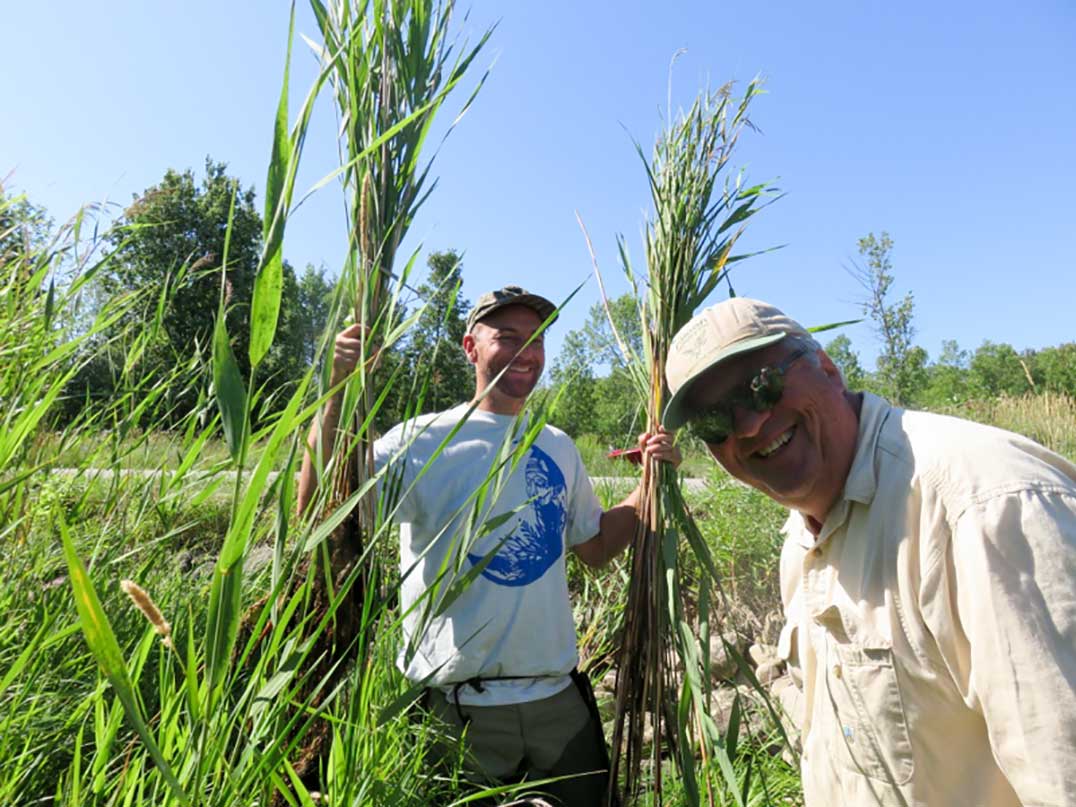MANITOULIN—Walking away from the early seminars on phragmites, an invasive reed that has infested Ontario’s shores from southern Ontario to Manitoulin and beyond, one might be forgiven for thinking it was already a lost battle, but the results of the first annual Manitoulin Phrag Week and the host of volunteers from across Manitoulin prove that is anything but the case.
Phragmites spreads through a wide variety of ways, from the thousands of tiny seeds released by mature plants into the wind or by rhizomes through the plant’s vast root networks. Tough, resilient and close-packed, the plants can quickly take over the

 waterfront squeezing out native flora (and fauna) and causing a massive environmental impact for cottagers and other waterfront properties (and the many creatures who depend on access to the shoreline to live and procreate) if not stopped early and aggressively in its tracks.
waterfront squeezing out native flora (and fauna) and causing a massive environmental impact for cottagers and other waterfront properties (and the many creatures who depend on access to the shoreline to live and procreate) if not stopped early and aggressively in its tracks.
“Turnout was excellent,” beamed biologist Judith Jones, of WinterSpider Eco-Consulting. Ms. Jones and her compatriots at Manitoulin Streams have been leading (read organizing, but they certainly have been getting their hip waders wet) the charge in the battle to keep invasive grasses off of Manitoulin’s shorelines. “We had 80 people come out. They came from all over, the turnout at White’s Point was great and we had a really good team at Michael’s Bay.”
So far this season, teams have tackled and knocked down phragmites patches in Providence Bay, Dean’s Bay, Sand Bay and a host of other locations across Manitoulin’s shorelines. “We hope to have Misery Bay done by summer,” she said. “We have made huge progress.”
Turnout is one measure for Phragmites Week, but success in this case is also in the knowledge and skillset being transferred to local landowners.
“People are learning how to deal with phragmites on their own properties,” she said. “They can identify it and help their neighbours understand how important it is to deal with the patches before they get a hold on the shoreline.”
With NGOs such as Manitoulin Streams and private enterprises such as WinterSpyder Eco-consulting working together with private landowners and volunteers to pool resources, those scarce resources can be stretched far beyond what could be done by any one group alone.
“It is a question of funding,” admitted Ms. Jones when asked about the possible scope of the work. “But I am optimistic.”
But there are larger sites, such as Lake Wolsey and Clover Valley, that will require a significant effort to tackle in the near future. But as the success of this first annual Phragmites Week has proven, where there is a will there is a way.



